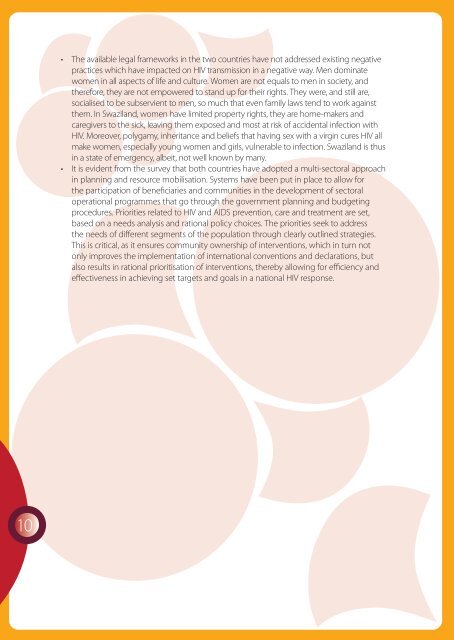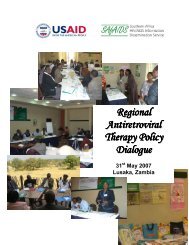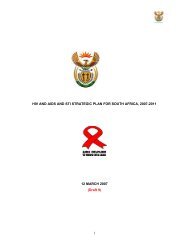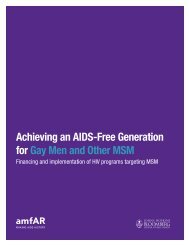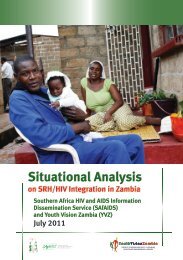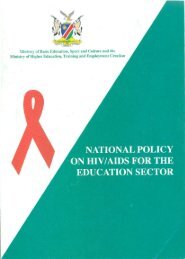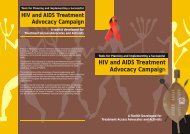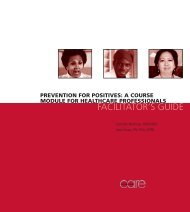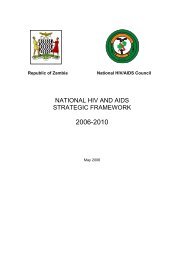Implementation of regional and international HIV prevention - SAfAIDS
Implementation of regional and international HIV prevention - SAfAIDS
Implementation of regional and international HIV prevention - SAfAIDS
- No tags were found...
You also want an ePaper? Increase the reach of your titles
YUMPU automatically turns print PDFs into web optimized ePapers that Google loves.
10• The available legal frameworks in the two countries have not addressed existing negativepractices which have impacted on <strong>HIV</strong> transmission in a negative way. Men dominatewomen in all aspects <strong>of</strong> life <strong>and</strong> culture. Women are not equals to men in society, <strong>and</strong>therefore, they are not empowered to st<strong>and</strong> up for their rights. They were, <strong>and</strong> still are,socialised to be subservient to men, so much that even family laws tend to work againstthem. In Swazil<strong>and</strong>, women have limited property rights, they are home-makers <strong>and</strong>caregivers to the sick, leaving them exposed <strong>and</strong> most at risk <strong>of</strong> accidental infection with<strong>HIV</strong>. Moreover, polygamy, inheritance <strong>and</strong> beliefs that having sex with a virgin cures <strong>HIV</strong> allmake women, especially young women <strong>and</strong> girls, vulnerable to infection. Swazil<strong>and</strong> is thusin a state <strong>of</strong> emergency, albeit, not well known by many.• It is evident from the survey that both countries have adopted a multi-sectoral approachin planning <strong>and</strong> resource mobilisation. Systems have been put in place to allow forthe participation <strong>of</strong> beneficiaries <strong>and</strong> communities in the development <strong>of</strong> sectoraloperational programmes that go through the government planning <strong>and</strong> budgetingprocedures. Priorities related to <strong>HIV</strong> <strong>and</strong> AIDS <strong>prevention</strong>, care <strong>and</strong> treatment are set,based on a needs analysis <strong>and</strong> rational policy choices. The priorities seek to addressthe needs <strong>of</strong> different segments <strong>of</strong> the population through clearly outlined strategies.This is critical, as it ensures community ownership <strong>of</strong> interventions, which in turn notonly improves the implementation <strong>of</strong> <strong>international</strong> conventions <strong>and</strong> declarations, butalso results in rational prioritisation <strong>of</strong> interventions, thereby allowing for efficiency <strong>and</strong>effectiveness in achieving set targets <strong>and</strong> goals in a national <strong>HIV</strong> response.


